Inspiring Germany
Psst... Germany’s (almost) undiscovered travel destinations
There is always plenty to discover all round Germany, even off the beaten path. Join us on our journey and enjoy lively cities and quiet landscapes, high mountains and deep lakes, rugged cliffs and romantic forests.
Do you know about Napoleon’s suitcase?
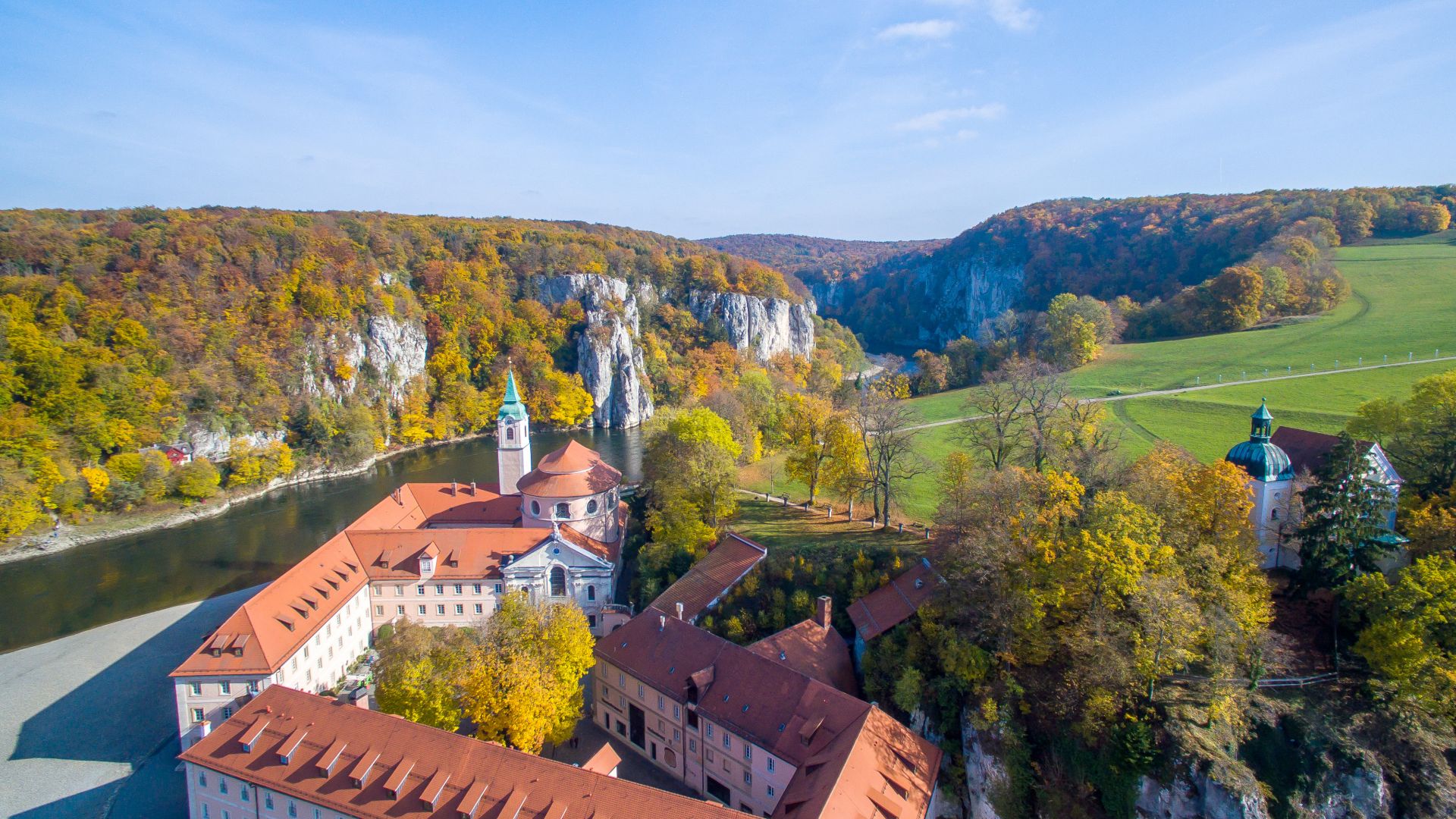 Kelheim: Weltenburg monastery at the Danube Panorama Trail near Kelheim
©DZT (Deutschland abgelichtet Medienproduktion)
Kelheim: Weltenburg monastery at the Danube Panorama Trail near Kelheim
©DZT (Deutschland abgelichtet Medienproduktion)
Unique rock formations, thick forests and the Danube River: near Kelheim in Lower Bavaria lies the Danube Gorge - a narrow section where the Danube meanders directly past cliffs, some of which are 70 metres high, before becoming the wide waterway we recognise. The so-called “Weltenburger Enge” was listed as a National Natural Monument in 2020. The rocks that form this Danube passage have amusing names: Kulschelfelsen (literally: cuddle cliff), and Napoleon’s Suitcase - the imagination has no limits. Weltenburg Abbey marks the valley's end, with a sandy beach on the banks of the Danube and a beer tradition that dates back to 1050.
A mermaid in Germany’s largest reservoir region
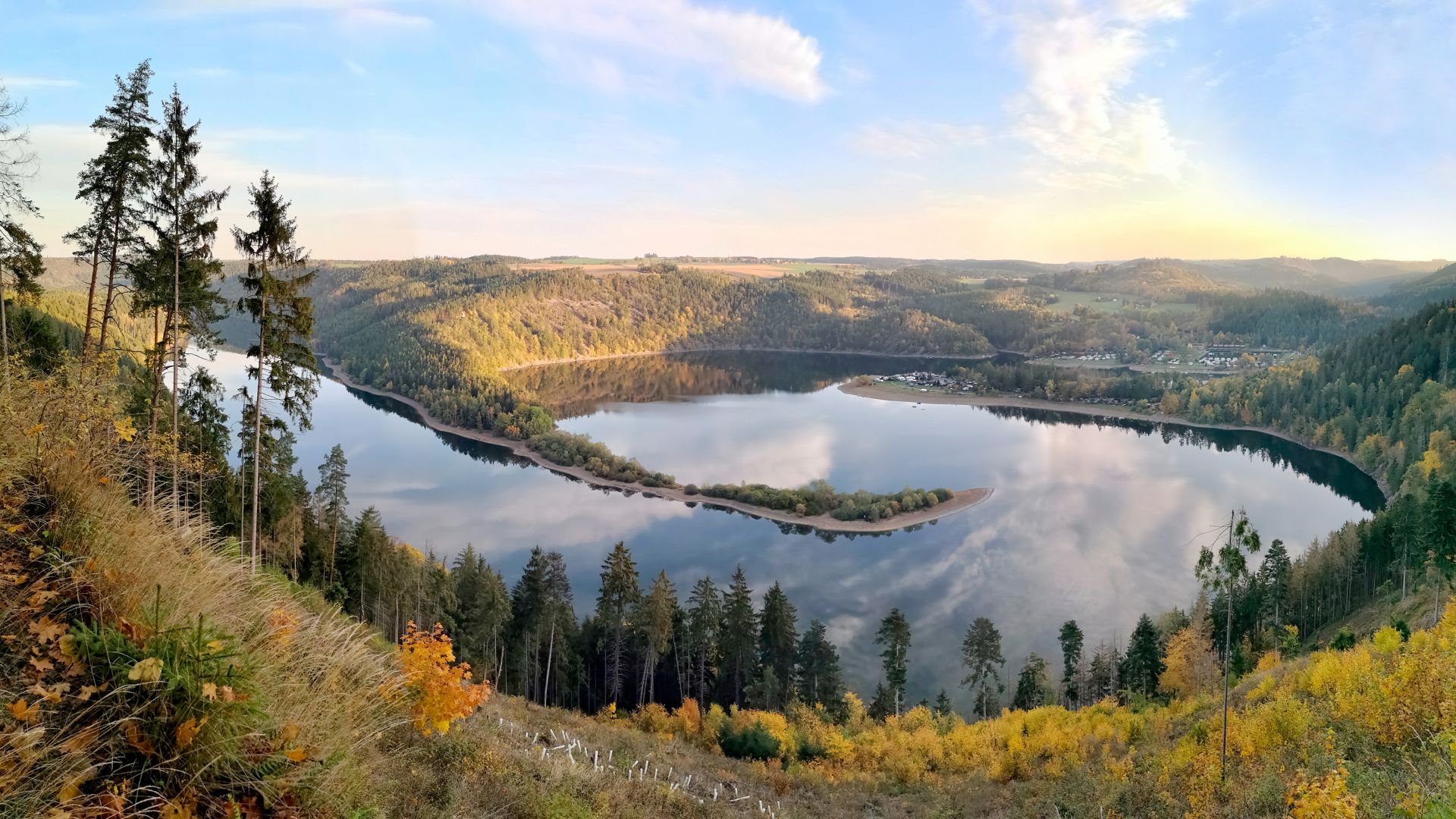 Hohenwarte: View of the Hohenwarte dam in the morning light
©AdobeStock (AVTG)
Hohenwarte: View of the Hohenwarte dam in the morning light
©AdobeStock (AVTG)
The largest reservoir region in Germany is also located in the middle of the green heart of Germany. Here, a dam was built around the river Saale to form the “Thuringian Sea” that we have today. This has created a unique river and lake landscape, sure to excite any water sports enthusiast: paddling, diving, swimming, surfing or sailing - everything is possible. With almost 80km of reservoirs, the so-called “Saale Cascade” is an impressive reservoir area between steep slopes in the middle of a compelling forest landscape. The area is surrounded by a network of cycling and hiking trails that run through idyllic villages, countryside and castles. And the special attraction: this area has its very own resident mermaid! She is a symbolic figure representing the “Thuringian Sea” holiday region, and is recognised throughout Germany as an emblem representing this area.
Porpoises, seals and crabs in East Frisia
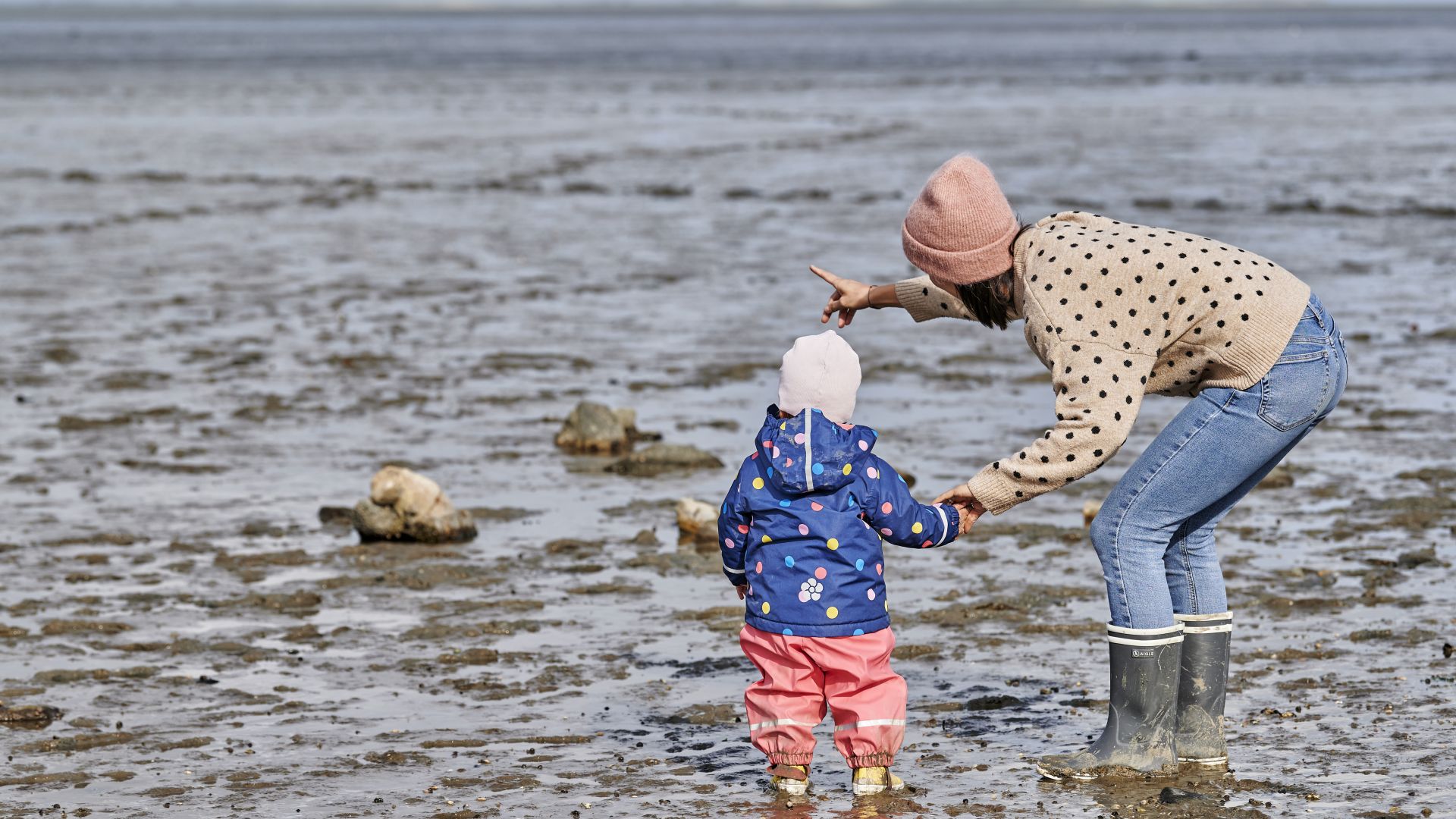 Wittmund: Mother and child admire the view of the Wadden Sea; Mudflat hiking center East Friesland
©DZT (Florian Trykowski)
Wittmund: Mother and child admire the view of the Wadden Sea; Mudflat hiking center East Friesland
©DZT (Florian Trykowski)
Twice a day, the ebb and flow of the tide form a unique natural landscape on the North Sea coast: the Wadden Sea is a delicate ecosystem and is protected as a UNESCO World Heritage Site. Visitors can enjoy maritime landscapes and meet the so-called “Small Five”, the tiny creatures that call the mudflats home: lugworms, cockles, shore crabs, mudflat snails and North Sea shrimps. In addition, there is the tangy North Sea air, harbour festivals, crab days, fish markets and the hearty “Moin” greeting to be heard everywhere. Just behind the dike line, the vast East Frisian landscape spreads out, characterised by its typical drawbridges and windmills. Breathe in, relax, and enjoy an East Frisian tea!
What is an “Elwetritsche”? Look out for this strange bird in the Dahner Felsenland!
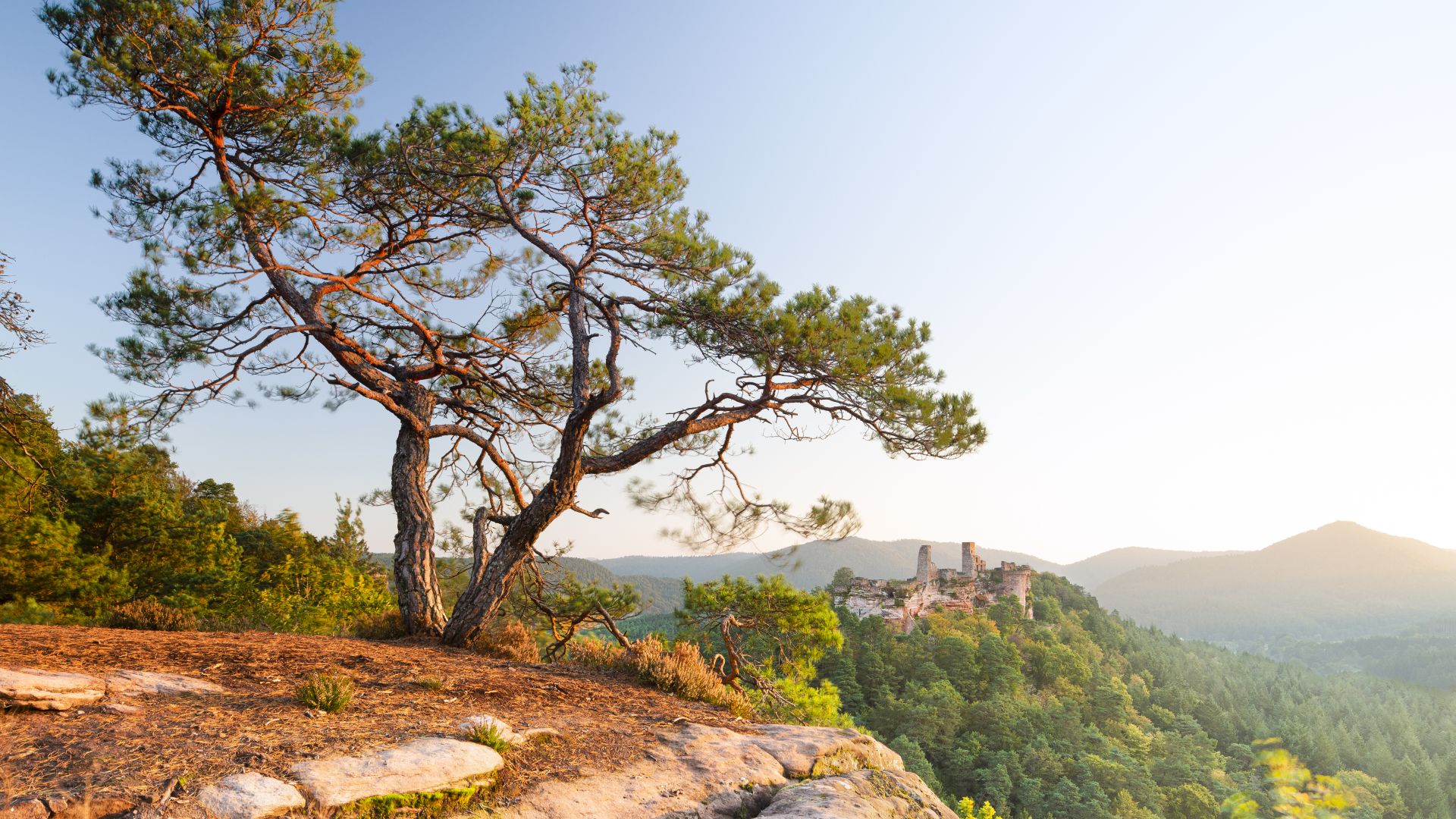 Dahn: Felsenland with Altdahn castle massif in the background
©DZT (Francesco Carovillano)
Dahn: Felsenland with Altdahn castle massif in the background
©DZT (Francesco Carovillano)
The Dahner Felsenland is located in the Palatinate, boasting numerous castles and castle ruins. Unique rocky landscapes, breathtaking views, wonderful hiking trails, countless leisure activities, and the traditional Palatinate cuisine make the “Dahner” well worth visiting, any time of the year. And the “Elwetritsche”? These are mythical creatures that live in the shelter of the Dahner Felsenland forest. They say that on the full moon, Elwetritsch hunters, armed with sticks and jute bags, roam the forest and rocky landscape in an attempt to capture the mythical national bird. Here you will always find traditional Palatine food, drink and, above all, laughter!
The Lord of the Rings on the Swabian Alb
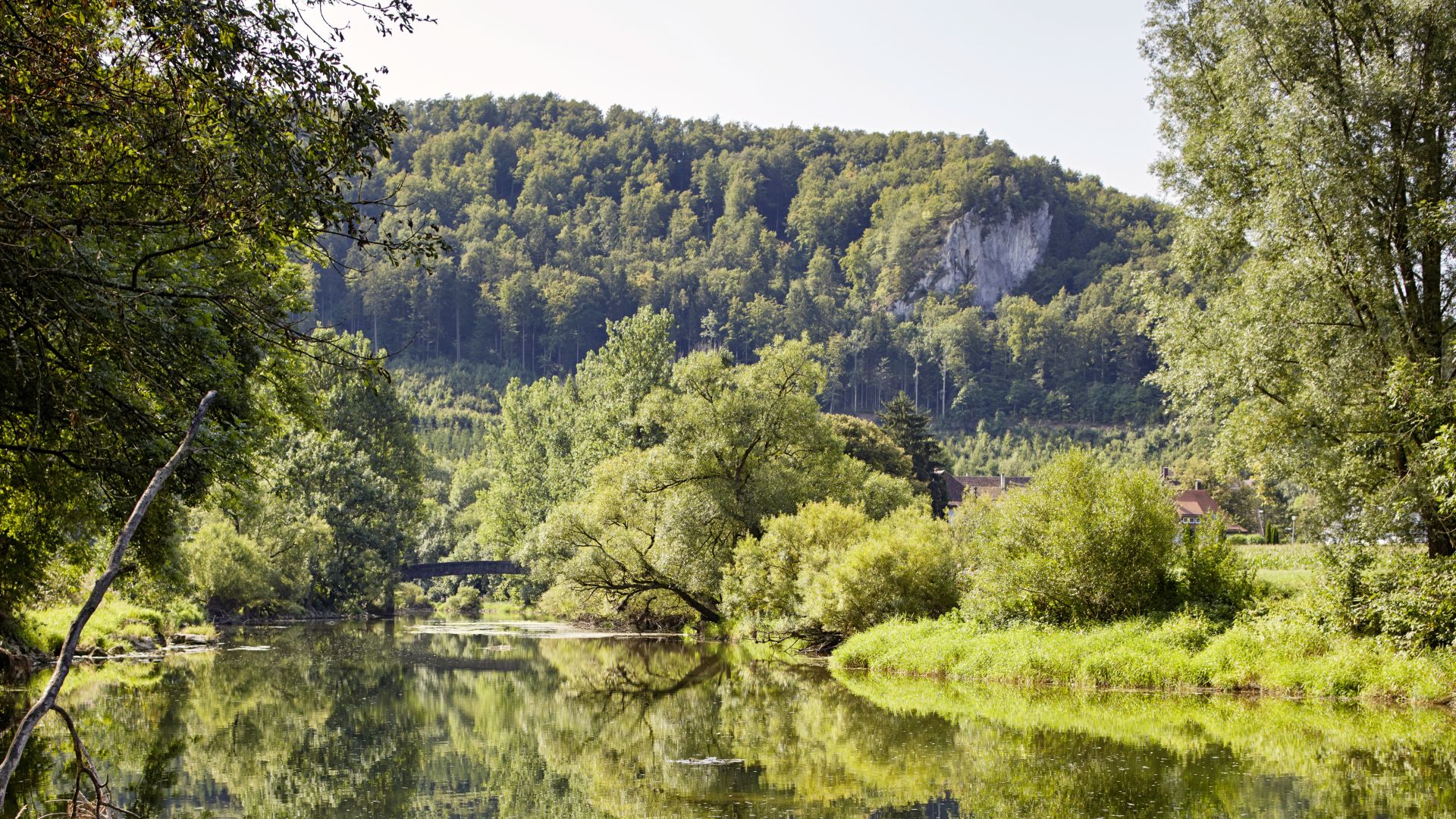 Beuron: Danube near Beuron Monastery
©DZT (Jürgen Pollak)
Beuron: Danube near Beuron Monastery
©DZT (Jürgen Pollak)
Just like in the epic trilogy: craggy rocks rising almost vertically into the sky, dark forests, morning mists, and a glittering river running through a narrow valley. The Upper Danube Valley in the Swabian Alb bears the nickname, the “Swabian Grand Canyon” - and rightly so. You can canoe, hike or explore the region by bike, all against a breathtaking backdrop. If you are interested in cultural history, a trip to the Beuron Archabbey is a must. Countless caves, castles and ruins also testify to a history of human settlement proven to date all the way back to the fifth century. Discover the Upper Danube Valley and look forward to magical views.
One landscape, three counties
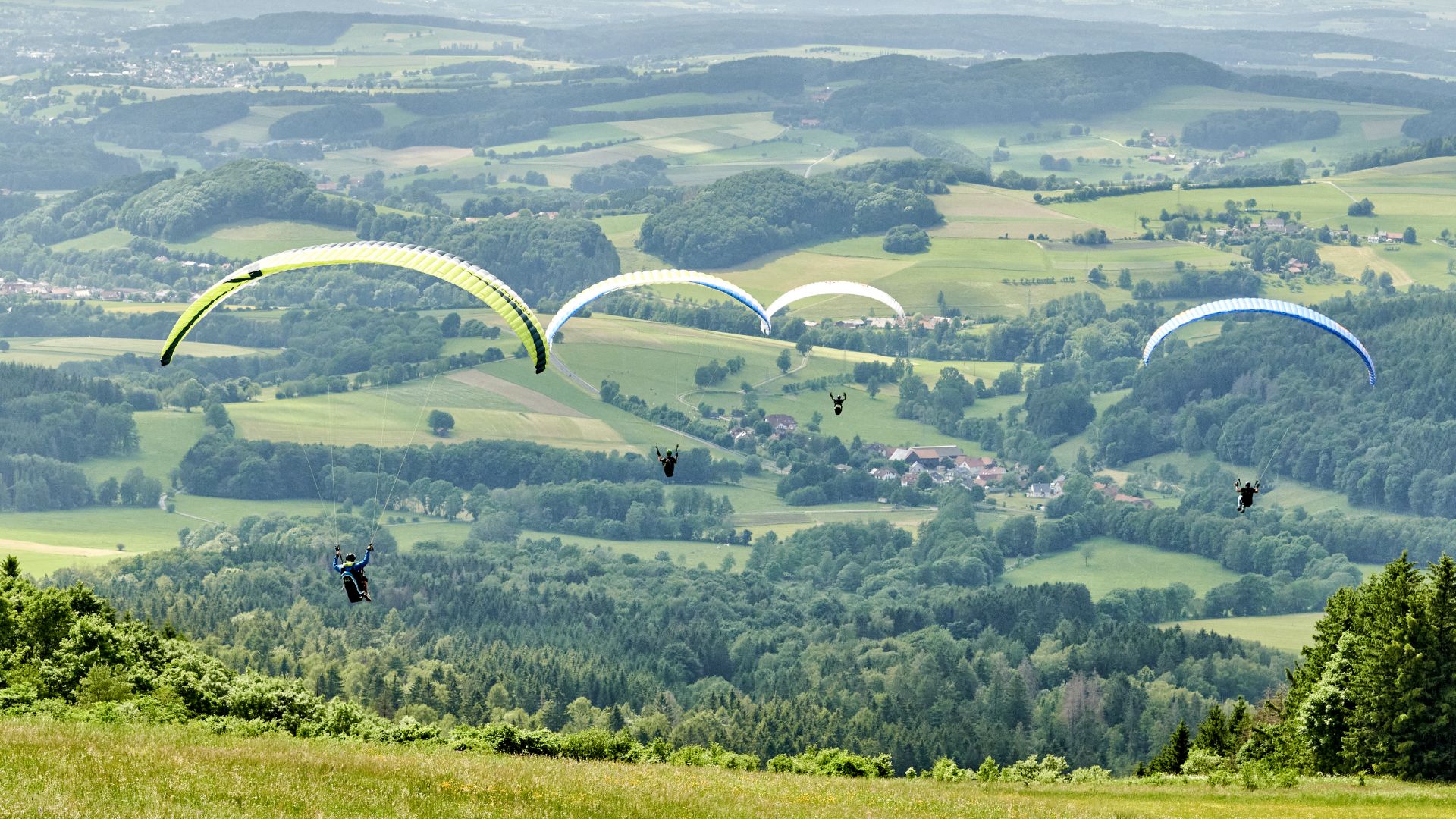 Poppenhausen: Paragliding at the Wasserkuppe in the Rhön Biosphere Reserve
©DZT (Florian Trykowski)
Poppenhausen: Paragliding at the Wasserkuppe in the Rhön Biosphere Reserve
©DZT (Florian Trykowski)
The Rhön Mountains are situated on the border triangle of Bavaria, Hessen and Thuringia. The region is also known as “the land of open vistas”, thanks to the wonderful views you can enjoy from the mountain ridges. Plenty of beech forests, Rhön sheep, rolling hills and above all, opportunities for adventure: at the Wasserkuppe water dome you can take off into the wind and soar towards the clouds. Enjoy the paragliding, gliding and model flying on offer here. Those who prefer to keep both feet firmly on the ground can hike to the Heidelstein, for example, or explore the Red or Black Moors, and reach many other gorgeous destinations. The Rhön Mountains also offer exciting trails for mountain bikers. Most of the Rhön's core area spreads across the huge biosphere reserve, which covers around 2433 square kilometres.
The Zschopau and its secrets
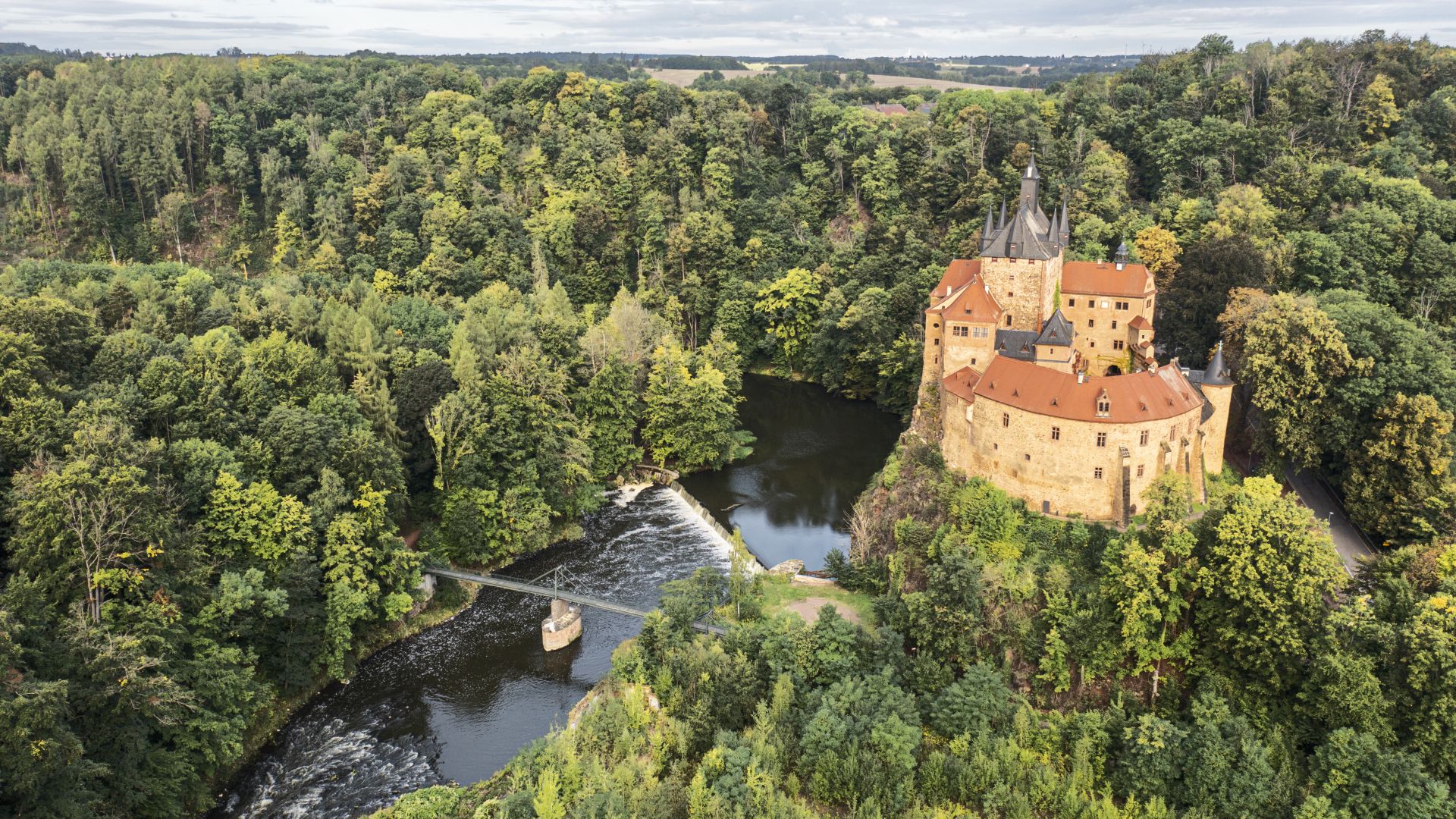 Kriebstein: Kriebstein Castle above the Zschopau Valley
©DZT (Andrea Hitzemann)
Kriebstein: Kriebstein Castle above the Zschopau Valley
©DZT (Andrea Hitzemann)
The Zschopau is a 130-kilometre-long river near Chemnitz, sculpting a ruggedly beautiful landscape in the Middle Saxon region. Castles, palaces and monasteries line the banks of the Zschopau like pearls on a necklace. The trio of cities, Leipzig, Chemnitz and Dresden are home to, among other things, the Kriebstein Castle, a genuine knight’s castle from the 14th century. Here you don’t have to choose between cultural history and nature. You can just enjoy both! The Zschopau River is fascinating, mysterious and shrouded in legend: hikes through this landscape of wooded slopes, narrow valleys with rugged cliffs and wide floodplains in the foothills of theOre Mountains are in equal part magnificent nature, active relaxation and pure magic.
The Spree, a boat and you!
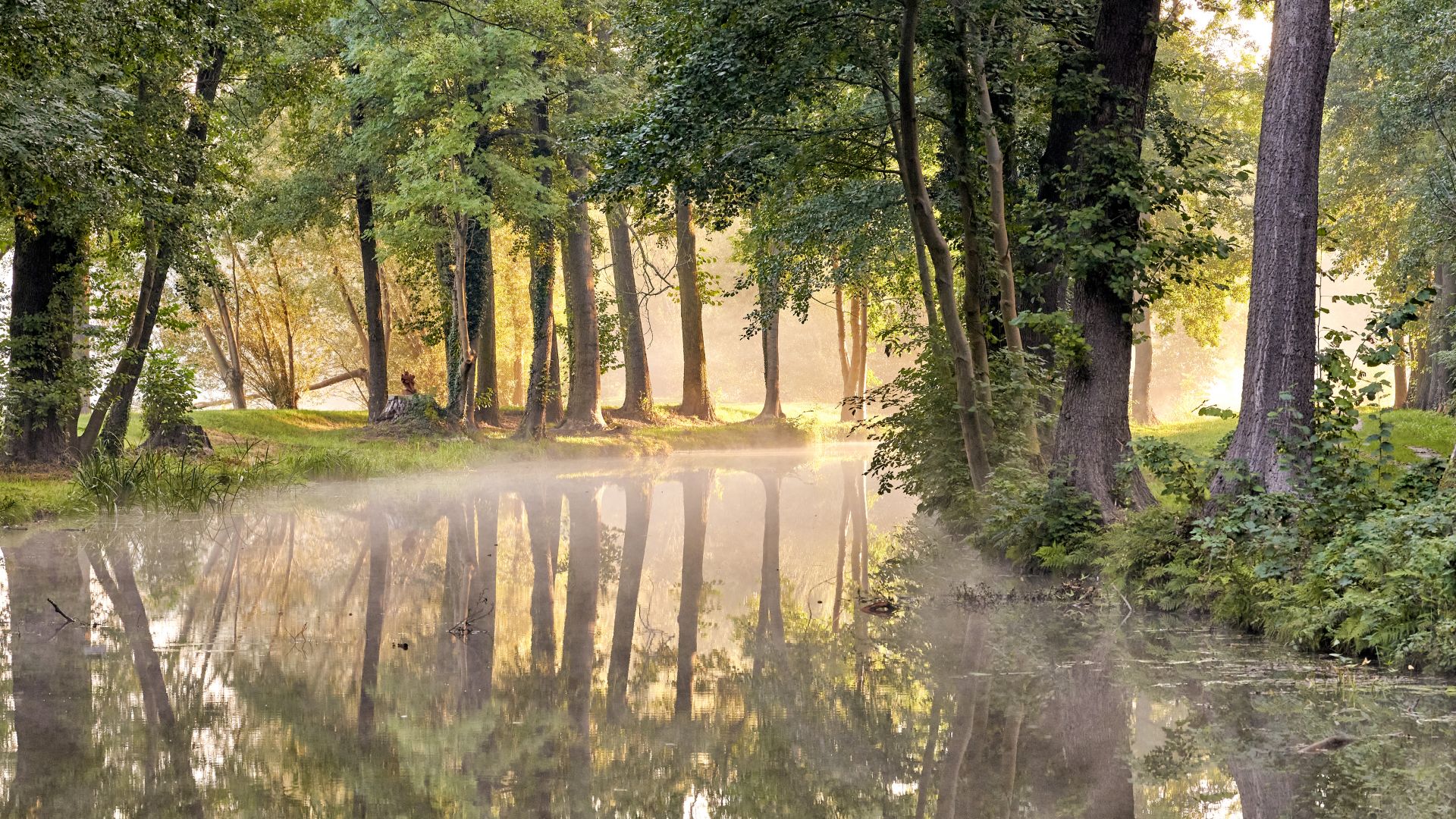 Spreewald: Reflections of trees and sun in the Spree in light fog
©TMB Fotoarchiv (Florian Trykowski)
Spreewald: Reflections of trees and sun in the Spree in light fog
©TMB Fotoarchiv (Florian Trykowski)
Enjoy a paddle boat or canoe tour through the Spreewald Biosphere Reserve. Thanks to its location sandwiched between Dresden and Berlin, this region is easily reachable. The Spreewald is a mixture of natural and cultural landscapes, with the Spree branching out into countless rivers that together form a labyrinth of waterways with a total length of about a thousand kilometres. One of the many canoe tours on offer is the Hochwaldtour - on this tour you’ll reach the high forest via the Leiper Graben and explore it via the Nordfliess and Zerra. Exploring a forest by canoe or paddle boat is a very special experience. In order to preserve the uniqueness and beauty of the Spreewald, both the Upper and Lower Spreewald are protected as a biosphere reserve.
Monschau: ideally situated for a trip to the Eifel region
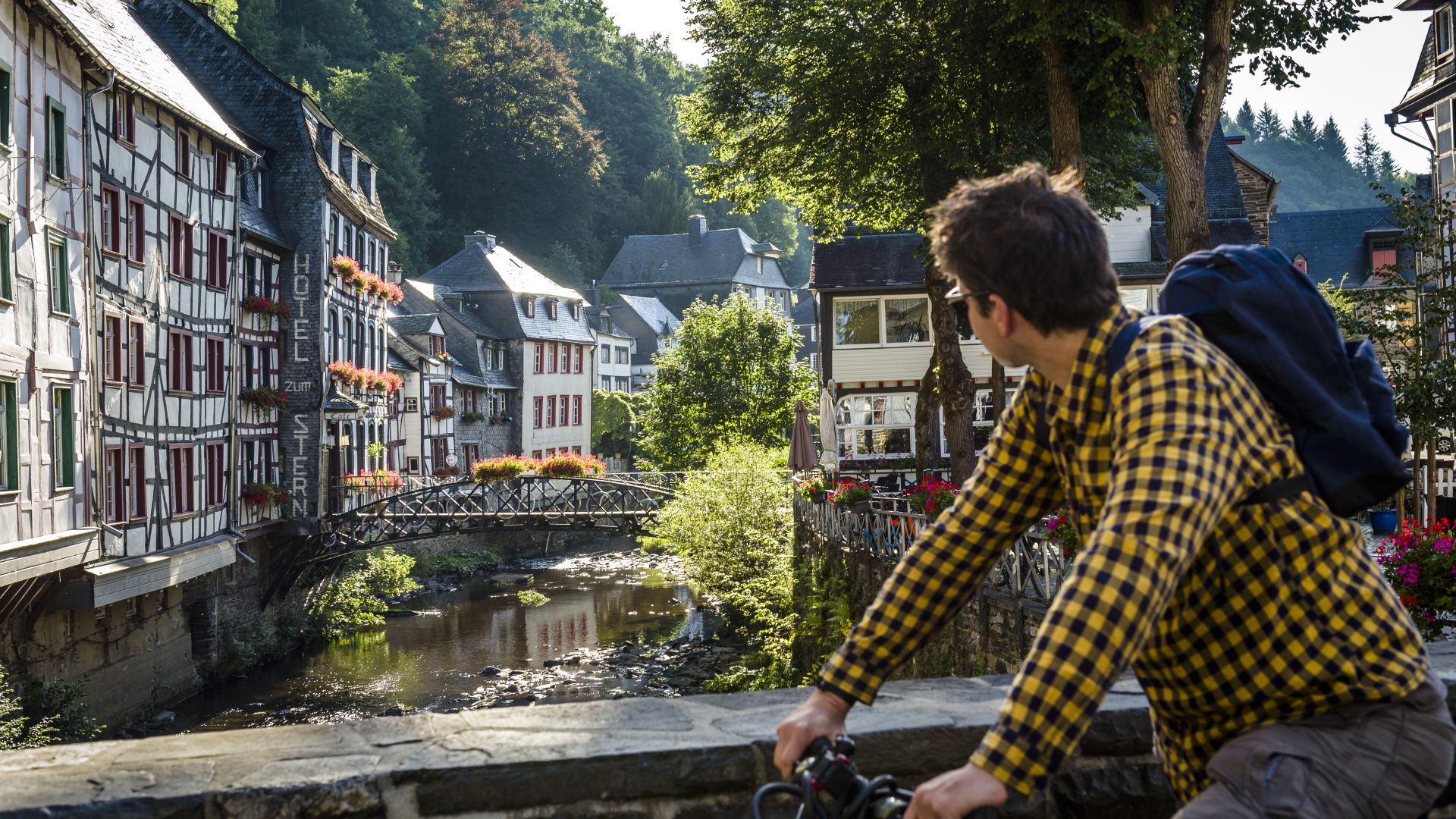 The town of Monschau: half-timbered houses on the Vennbahn cycle path in the Eifel region
©DZT (Stijn Van Hulle)
The town of Monschau: half-timbered houses on the Vennbahn cycle path in the Eifel region
©DZT (Stijn Van Hulle)
When you plan your Eifel experience, you should pay a visit to the small town of Monschau on the Belgian border. Here you can stay in the enchanting medieval centre with its half-timbered houses and narrow cobblestoned streets. Above it towers the Monschau Castle with its turrets - a great venue for open-air concerts. If you then fancy seeing some wild cats, black storks, or a sea of wild daffodils, North Rhine-Westphalia’s national park, the Eifel, isn’t far: a paradise for nature lovers, which you can discover on the lovely “Wilderness Trail”. This is a 86-kilometre long route that leads right across this area in the Eifel.
Blue on blue in the Swabian Alb Global Geopark
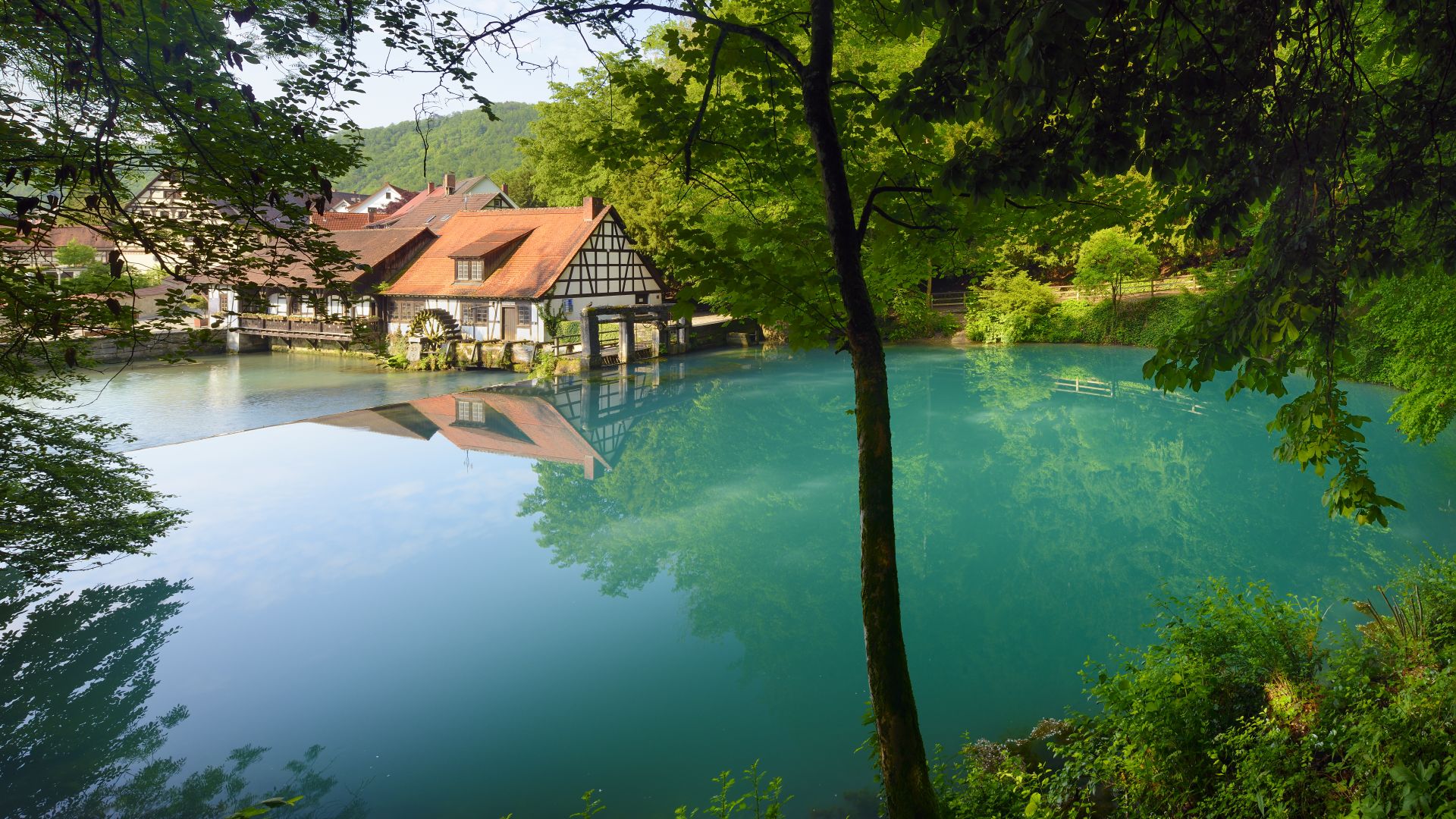 Blaubeuren: Blautopf Karst Spring
©DZT (Francesco Carovillano)
Blaubeuren: Blautopf Karst Spring
©DZT (Francesco Carovillano)
It’s even called Blau (literally: blue) and is a river in Baden-Württemberg - more specifically in the Swabian Alb. Nothing more needs to be said about its colour, but on its shores you can find caves, rocks and even more blue springs: The surrounding caves in the Ach and Blau valleys are important sites of prehistoric relics in Europe, and the Blaubeuren can be considered one of the“capitals of archaeology”. It has been home to both the ancient Neanderthal race as well as modern humankind. Weapons, jewellery and tools from far-gone periods of human history bear witness to this. People continue to explore the caves there, and new things are constantly being discovered. When will you explore the Blue?